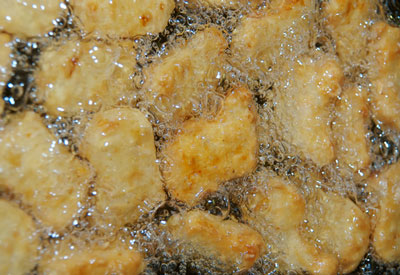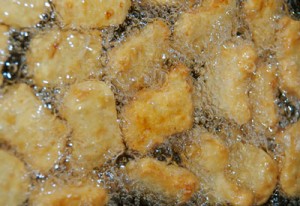Understanding and manipulating food porosity could affect a food’s health benefits
- Like
- Digg
- Del
- Tumblr
- VKontakte
- Buffer
- Love This
- Odnoklassniki
- Meneame
- Blogger
- Amazon
- Yahoo Mail
- Gmail
- AOL
- Newsvine
- HackerNews
- Evernote
- MySpace
- Mail.ru
- Viadeo
- Line
- Comments
- Yummly
- SMS
- Viber
- Telegram
- Subscribe
- Skype
- Facebook Messenger
- Kakao
- LiveJournal
- Yammer
- Edgar
- Fintel
- Mix
- Instapaper
- Copy Link
Posted: 20 May 2015 | Victoria White | No comments yet
Two food scientists have learned that understanding and manipulating porosity during food manufacturing can affect a food’s health benefits…


Two University of Illinois food scientists have learned that understanding and manipulating porosity during food manufacturing can affect a food’s health benefits.


Youngsoo Lee reported that controlling the number and size of pores in processed foods allows manufacturers to use less salt while satisfying consumers’ taste buds. Pawan Takhar has found that meticulously managing pore pressure in foods during frying reduces oil uptake, which results in lower-fat snacks without sacrificing our predilection for fried foods’ texture and taste.
Processed foods can contribute a lot of the salt that is consumed – for example, 70% of the salt Americans consume comes from processed foods. As such, Lee began to study the relationship between the microstructural properties of processed foods and the way salt is released when it is chewed.
Altering porosity in processed food could mean that less salt will need to be added
“Much of the salt that is added to these foods is not released in our mouths where we can taste it, and that means the rest of the salt is wasted,” he said. “We wanted to alter porosity in processed food, targeting a certain fat–protein emulsion structure, to see if we could get more of the salt released during chewing. Then food manufacturers won’t have to add as much salt as before, but the consumer will taste almost the same amount of saltiness.”
Increasing porosity also changed the way the foods broke apart when they were chewed, exposing more surface area and increasing saltiness, he said.
“When foods crumble easily, we further reduce the amount of salt that is needed. Changing the number or size of pores in the food’s surface can help us to accomplish this,” he said.
Takhar said that his porous media approach to understanding the behaviour of water, oil, and gas during frying will help create strategies that optimise the frying process, reduce oil uptake, and produce lower-fat foods.
“In a matter of seconds, when you put the food in the fryer, water starts evaporating, vapours form and escape the surface, oil penetration starts, and heat begins to rise while at the same time there’s evaporative cooling off at different points in the food. Some polymers in the food matrix may also change their state, and chemical reactions can occur. It’s not an easy set of changes to describe,” Takhar explained.
Negative pore pressure in fried food causes oil uptake to increase
Within 40 seconds of frying, the texture of gently fried processed foods like crackers is fully developed, the scientist said. “That’s the cracker’s peak texture. Any longer and you’re just allowing more oil to penetrate the food.”
“A lot of frying research has focused on capillary pressure in the oil phase of the process, but we have found that capillary pressure in the water phase also critically affects oil uptake,” Takhar said.
Capillary pressure makes overall pore pressure negative, and that negative pressure tends to suck oil from inside.
“The trick is to stop when pore pressure is still positive (or less negative)—that is, when oil has had less penetration. Of course, other variables such as moisture level, texture, taste, and structure formation, must be monitored as well. It’s an optimisation problem,” he noted.
When this exquisite balance is achieved, lower-fat, healthier fried foods are the result, he added.
Lee and Takhar are professors in the College of Agricultural, Consumer and Environmental Sciences’ Department of Food Science and Human Nutrition.
“Temporal Sodium Release Related to Gel Microstructural Properties—Implications for Sodium Reduction” was published in Journal of Food Science. Lee and Wan-Yuan Kuo are co-authors of the study.
“Modeling Multiscale Transport Mechanisms, Phase Changes, and Thermomechanics during Frying” was published Food Research International. Co-authors are Takhar and Harkirat S. Bansal of the University of Illinois and Jirawan Maneerote of Kasetsart University.




